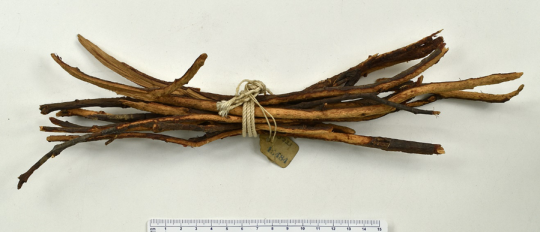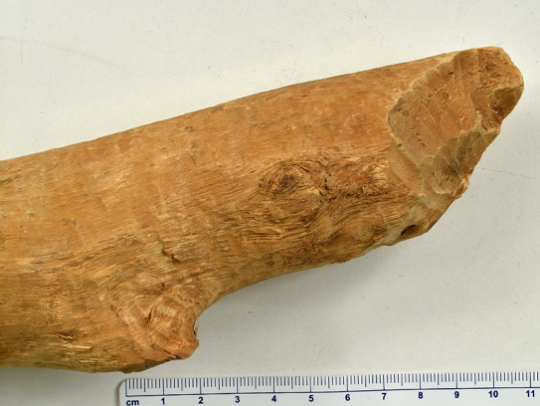by Sarah Shelley
The Section of Mammals at the Carnegie Museum of Natural History houses nearly 130,000 specimens. As a fairly recent hire in the section, I have spent the last six months familiarizing myself with the contents of the boxes, drawers and jars and the many delights they contain. Just recently, Curator of Mammals, John Wible, and I were rummaging through one of the older cabinets in the section. In these cabinets are boxes containing old exhibit specimens including skulls sliced in half, some pelts and even some jars of owl pellets containing rodent bones.

In one of the drawers my eyes fell upon a small bundle of sticks. I picked them up, somewhat bemused.
‘What are these?’ I asked.
‘Those are beaver sticks.’ Replied John.

And sure enough, upon closer inspection, it was possible to see small gnaw marks on the sticks. We continued our rummaging and in the next drawer found another bundle of larger sticks.
‘And those are big beaver sticks.’

Beavers are large, semiaquatic rodents. There are two living species, the North American beaver (Castor canadensis) and the slightly larger Eurasian beaver (Castor fiber). During the Ice Age there was even a giant beaver (Castoroides) that was about two meters long and thought to weigh approximately 100 kg (four times more than the average living beaver).
Beavers use sticks and logs to dam rivers and build their dens, known as ‘lodges.’ They use their enlarged front incisors to break down plants and trees. Their front teeth grow continuously and are stained red by an iron pigment that serves to strengthen the tooth enamel against wear.

Sarah Shelley is a postdoctoral research fellow in the Section of Mammals at the Carnegie Museum of Natural History. Museum employees are encouraged to blog about their unique experiences working at the museum.
